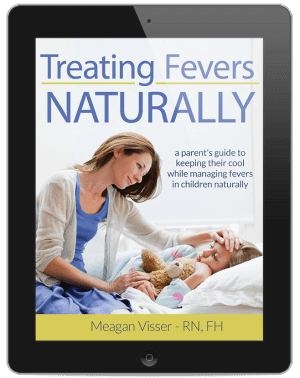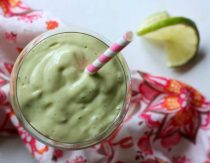
I like math just about as much as the next mom. Counting baby toes, pennies and the number of times my son says “sooopooon” (spoon) in a day – all good stuff! But when it comes to my kids health, math rarely factors in. Why? Because I watch them, not the numbers. This is especially true with fevers.
- And here’s what Dr. Chow-Johnson has to say:
- However, experts also say that there are times you should seek medical attention for a fever
- American Academy Of Pediatrics Issues New Advice On Fevers
- What About Febrile Seizures?
- Are febrile seizures harmful?
- So what are febrile seizures?
- How To Treat A Fever Naturally
- So, There You Go!
I’m not alone, either. According to Dr. Hannah Chow-Johnson – pediatrician at Loyola University Health System and assistant professor of pediatrics at Loyola University Chicago Stritch School of Medicine – numbers may not be as significant as we tend to think.
“My most frequent calls are from worried parents who want to know how high is too high of a fever. What many parents don’t realize is that often, fevers are their child’s friend.
…Fevers can actually help your child recover more quickly, especially if he or she is battling a viral illness . . . I often wish thermometers had a gauge that read either ‘fever’ or ‘no fever.’ That would definitely help parents who worry if their child has a fever that’s too high.”
Loyola Medicine: That Fever Might Be Your Child’s Friend
Here’s a video from another pediatrician, Dr. Wendy Sue Swanson, which explains more:*
“Seattle Mama Doc” On Fever Phobia
And then there’s Dr. Janice Sullivan, a professor of pediatric clinical care and clinical pharmacology at the University of Louisville School of Medicine, who told The Washington Post that “Fever is the body’s normal response to infection — it’s a natural defense mechanism.” She explains that a high temperature triggers the body’s production of infection-fighting white blood cells, which inhibits the growth of viruses and bacteria, and that “If you lower the fever, you may be affecting the body’s ability to respond to that infection.”
Can I just say that I LOVE these women?? Personally I’d avoid the use of fever reducers if possible – here is one of the many reasons why – but I am still **this** close to sending them a dozen orchids. Regarding when fevers may need the attention of a pediatrician, here’s what Dr. Swanson has to say:
“The main take home is not to treat fever per se, but your child. There is no reason to make a fever disappear if your child is otherwise acting well, playful, and staying hydrated. But do know there are some fevers that do require a visit with the pediatricians. It’s important to seek care when fever persists after 3 days in infants and children, any fever in a baby 3 month old or less, and if fever is over 104 degrees.”
And here’s what Dr. Chow-Johnson has to say: ^
- “Fevers are safe. A fever is the body’s way of controlling its immune response. Your child’s body is controlling the temperature and it’s going to fluctuate no matter what you do. Don’t awaken a child from a deep sleep to give medications for the fever. Sleep is more important.
- Take oral temperatures when possible and rectal ones when not. Ear, sticker, pacifier and temporal artery thermometers are not reliable. Stick to a good, old-fashioned digital thermometer for the best accuracy. As far as how frequently a fever needs to be checked, once a day is sufficient.
- There is not a maximum number on the thermometer that means go to the emergency room, unless your child stops drinking, urinating or responding well. But if children are doing all three, parents can monitor them from home.
- Your goal should be your child’s comfort, not reducing the fever. Be generous with fluids, ice chips and popsicles. Dress children in light clothing and give tepid baths to help cool them down. Don’t use rubbing alcohol as this can be absorbed into the skin. Give fever reducers only if your child feels uncomfortable, not solely to reduce the temperature. And don’t alternate fever-reducing medications, as this could lead to overdosing or excessive medication that your child doesn’t need.
However, experts also say that there are times you should seek medical attention for a fever ^
Here is the criteria outlined by Dr. Chow-Johsnon:
- “A child who is less than 8 weeks old and has a fever of 100.4 degrees or higher should be seen by a physician immediately
- A child who is undergoing chemotherapy or has a compromised immune system
- If there is no clear source for the child’s fever (no cough, runny nose or known pain) and the fever has lasted for 2-3 days
- If a fever lasts for more than 5 days, see a physician, even if your child looks well.”
Loyola Medicine: Let Fever Might Be Your Child’s Friend (emphasis mine)
Ahhh, I’m swooning! And the best part is she’s not alone: Another pediatrician, Dr. Natasha Burgert, says pretty much the exact same thing.
“There is no ‘number’ on a thermometer that requires a trip to the Emergency Department. Nope, not even 104F degrees. With very specific exceptions, kids do not have to maintain a “normal” temperature during times of illness.” (Fever: 5 Facts You Should Know)
American Academy Of Pediatrics Issues New Advice On Fevers ^
Parents have been told for generations that a high fever can be dangerous to kids. If you don’t get your child’s fever down, you’ll run the risk of frying brain cells, doctors have warned.
But now the American Academy of Pediatricians has turned that conventional wisdom on its head. A new report published this month in Pediatrics states that not only is there no need to bring down a fever in an otherwise healthy child, but there is a downside to treating a fever – it can prolong the illness that originally sparked the high temperatures.
Here’s an excerpt from Journal of Pediatrics report:
It should be emphasized that fever is not an illness but is, in fact, a physiologic mechanism that has beneficial effects in fighting infection.8,–,10 Fever retards the growth and reproduction of bacteria and viruses, enhances neutrophil production and T-lymphocyte proliferation, and aids in the body’s acute-phase reaction.11,–,14 The degree of fever does not always correlate with the severity of illness. Most fevers are of short duration, are benign, and may actually protect the host.15 Data show beneficial effects on certain components of the immune system in fever, and limited data have revealed that fever actually helps the body recover more quickly from viral infections, although the fever may result in discomfort in children.11,16,–,18
The report also found that “There is no evidence that children with fever, as opposed to hyperthermia, are at increased risk of adverse outcomes such as brain damage.7,9,21,–,23”
This reminds me of the American Academy of Pediatrics updated stance on ear infections. New data suggests that they’re often misdiagnosed, and the old method of treating earaches with antibiotics may have actually caused an increase in actual ear infections. (source) The American Academy of Pediatrics now recommends a “wait and see” approach instead, acknowledging that most of the time it’s best to let small illnesses run their course. Here are some natural remedies many parents have found helpful for earaches. But I’m getting off topic here – back to fevers!
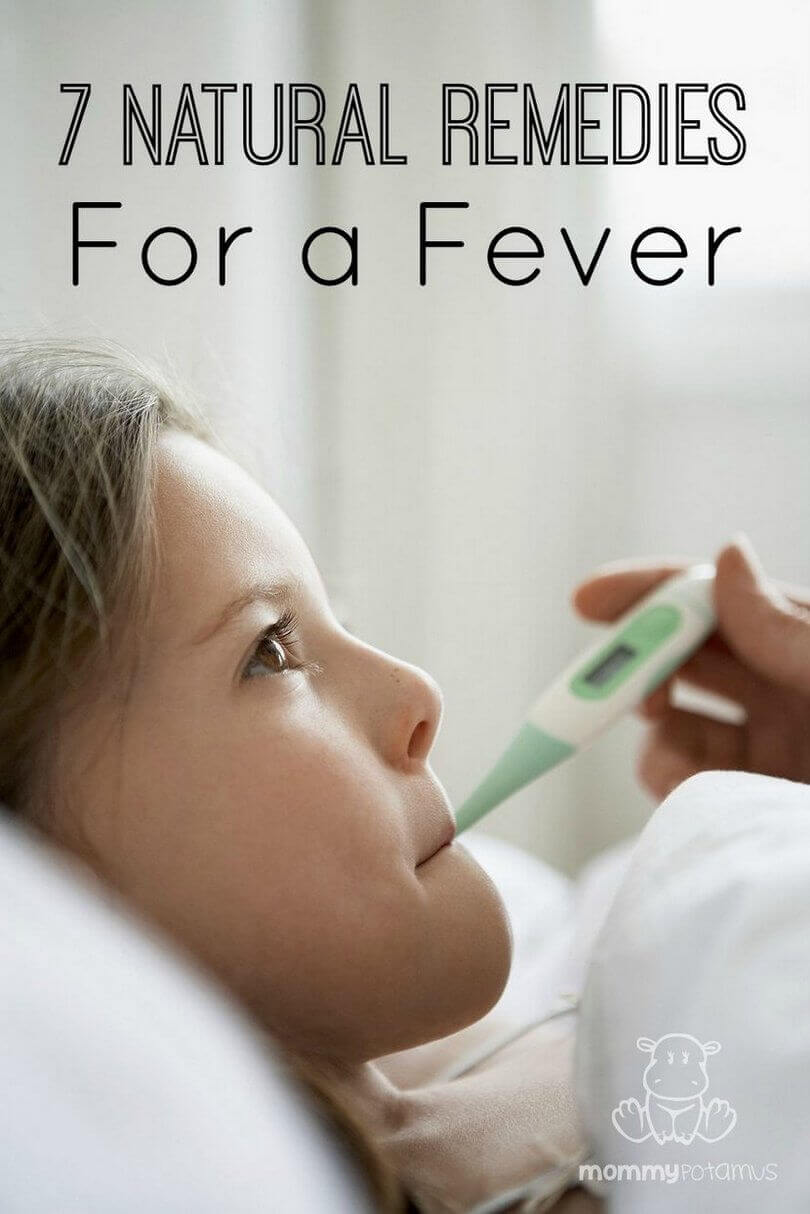
What About Febrile Seizures? ^
One of the most common objections to letting a child ride out a fever seems to be concern that fevers cause febrile seizures. However, a report published in the Journal Pediatrics states that – despite concerns from doctors and nurses that an unmedicated fever might have an adverse effect – “antipyretic use does not prevent febrile seizures.”
Febrile seizures are associated with a rapid change in body temperature in either direction. (source) Many parents have reported that their child experienced a febrile seizure after receiving a fever reducing medication. This suggests that in some cases, fever reducers may bring the fever down too quickly and cause a febrile seizure. Also, there’s another way fever reducers may trigger febrile seizures. According to Amy Love, NTP, CGP, CILC, “fever reducers can CAUSE the febrile seizures because they suppress the body’s attempt to create a fever, and so it has to try harder, thus causing a higher fever (that rises faster), called a rebound fever.”
Are febrile seizures harmful? ^
According to the Royal Children’s Hospital In Melbourne, “Most children with fever suffer only minor discomfort [from a fever], however 1 in 30 will have a febrile convulsion at one time or another. This usually happens between the ages of 6 months and 6 years. Febrile convulsions are not harmful to your child and do not cause brain damage. They are, however, quite upsetting to parents to witness.
Most children with febrile convulsions only ever have one fit. Some children will have one or more seizures, usually during illnesses which cause a fever. There is no increased risk of epilepsy in children who have febrile convulsions.”
So what are febrile seizures? ^
Though the mechanism is considered unknown, new research may offer clues. According to this study, febrile seizures may be related to the function of calcium channels within the body. We know that calcium channels are temperature sensitive, and some experts theorize that part of the function of a fever is to activate calcium channels, which in turn activates white blood cells that mount an immune response. One retrospective study speculates that some “simple febrile seizures” may in some cases actually be a “hypocalcaemic convulsions due to vitamin D deficiency” masquerading as a simple febrile seizure. In other words, if an individual is calcium deficient when a fever stimulates the calcium channels, it might cause some episodes categorized as simple febrile seizures. Another study found that iron deficiency/anemia is a risk factor for febrile seizures. Again, this is just speculation, but we’re going to revisit this idea in the home remedy section so I wanted to mention it.
How To Treat A Fever Naturally ^
So fevers aren’t scary and we should watch the child instead of the thermometer, but does that mean we can do nothing to help our children (or ourselves) be more comfortable? Of course not! Here are some home remedies that are thought to support immune function and increase comfort levels during a fever.
#1 ~ Calcium
According to Dr. Bernard Jensen, one of the main functions of a fever “is to pull ionizable calcium out of the bones and draw it into the blood where it is useful for fighting infections.” (source) The process may be part of what makes us feel achy, and some care providers suggest giving the body what it needs without requiring it to withdraw from “the bank.” Some expert believe that calcium works with the fever to make it more effective, which may reduce illness duration. One small study of patients with dengue fever did find that supplementation with calcium and vitamin D (which assists with calcium absorption) reduced the duration and overall symptoms of the illness. Calcium is best obtained from food, but it can also be obtained through supplements. Calcium citrate malate and calcium orotate are though to be two of the most bioavailable forms. (Vitamin D may also be helpful for increasing absorption)
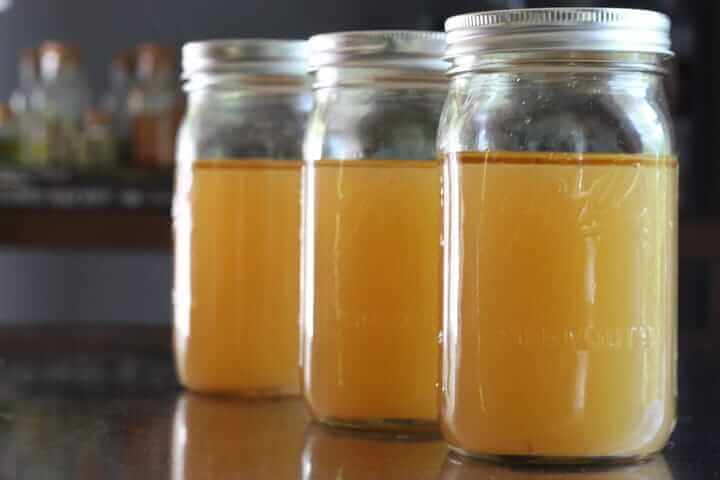
#2 – Bone Broth
It seems that Grandma was right after all – chicken soup is good for more than just the soul. Though some have thought that the comfort associated with chicken soup was a placebo effect, research published in CHEST: The Joural of the American College of Chest Physicians, suggests that “chicken soup may contain a number of substances with beneficial medicinal activity.”
Several components of broth are thought to be beneficial, but the one that has been most studies is cartilage. In Nourishing Broth, Sally Fallon Morell and Dr. Kaayla Daniel detail research which suggests that cartilage supports healthy immune function by “stimulating just about every time of white blood cell the body needs to mount a strong defense against unwanted microbes.” (page 95)
Of course, it’s also rich in bioavailable calcium, which as I just mentioned is likely to be beneficial as well.
If you’re not sure where to start, here’s an easy tutorial on making bone broth in a slow cooker.
#3 – Gelatin
Another component of bone broth is gelatin, which may make skin look more youthful, support digestion, improve sleep, and support immune function. In Nourishing Broth, Morell and Dr. Daniel mention that research on the benefits of gelatin for immune function is limited and sometimes contradictory, but they suggest that this may be due to differences in the raw materials used to make the gelatin. Gelatin can be derived from several animals with different methods – some use just the hide, some use the hide and cartilage, and some “gelatin” studies actually used isolated compounds found within gelatin – glycine for example.
One study did find that gelatin “stimulates phagocytosis, the process by which a cell surrounds, engulfs, and eats microorganisms and cellular debris.” (page 96) However, that’s not the reason I included it here. Whether or not it benefits immune function directly, it’s a very soothing, easily digestible source of nourishment. If I didn’t have access to homemade bone broth, I’d dissolve this grass-fed gelatin in hot chamomile tea or this one in cold water.
#4 – Herbal Infusion
Certain herbs, such as elder flower and yarrow, are thought to benefit immune function. In this post Megan Visser, RN, show you how to make an herbal infusion that you can either drink or make into a smoothie pop. (The smoothie pop is #8 on this list.)
#5 – Apple Cider Vinegar
What happens if/when we feel it’s time to try to bring the fever down? Apple cider vinegar is an old remedy used by grandmothers and great-grandmothers that is thought to “draw out” the fever – people still swear by it! Soak a couple washcloths in diluted apple cider vinegar (1 part vinegar and 2 parts water), then place them on the forehead and tummy, or add a cup to a warm bath. Some people also soak a cloth in and wrap it around the soles of the patient’s feet.
#6 ~ Warm Bath
A cold bath can shock the body into trying to raise the internal thermostat even more, but a warm to extra warm bath (depending on comfort level) may be helpful, especially when a cup of apple cider vinegar is mixed in.
#7 ~ Herbal Freezer Pops
These herbal freezer pops support immune function and help keep a child hydrated during a fever. Get the recipe.
Want more info? Treating Fevers Naturally is a very guide written by Meagan Visser, an R.N. with a holistic perspective on fevers. It includes a lot of great info and recipes for keeping kids comfortable during a fever.
So, There You Go! ^
I’m not against scales, statistics, thermometers and all those other things mama’s are supposed to be fond of. I totally use scales to make soap, statistics to analyze the likelihood that Daddypotamus will make up for the fact that he will be traveling on our anniversary (sources say YES!). And thermometers . . . oh how I love them to make marshmallows! And sometimes I use them on my kids, too. 🙂
If by chance that thermometer starts setting off alarm bells for me, you can bet my house will be stinking like a garlic omelette with vinegar on the side!
Have you ever used a natural remedy to reduce a fever? How did it work for you?
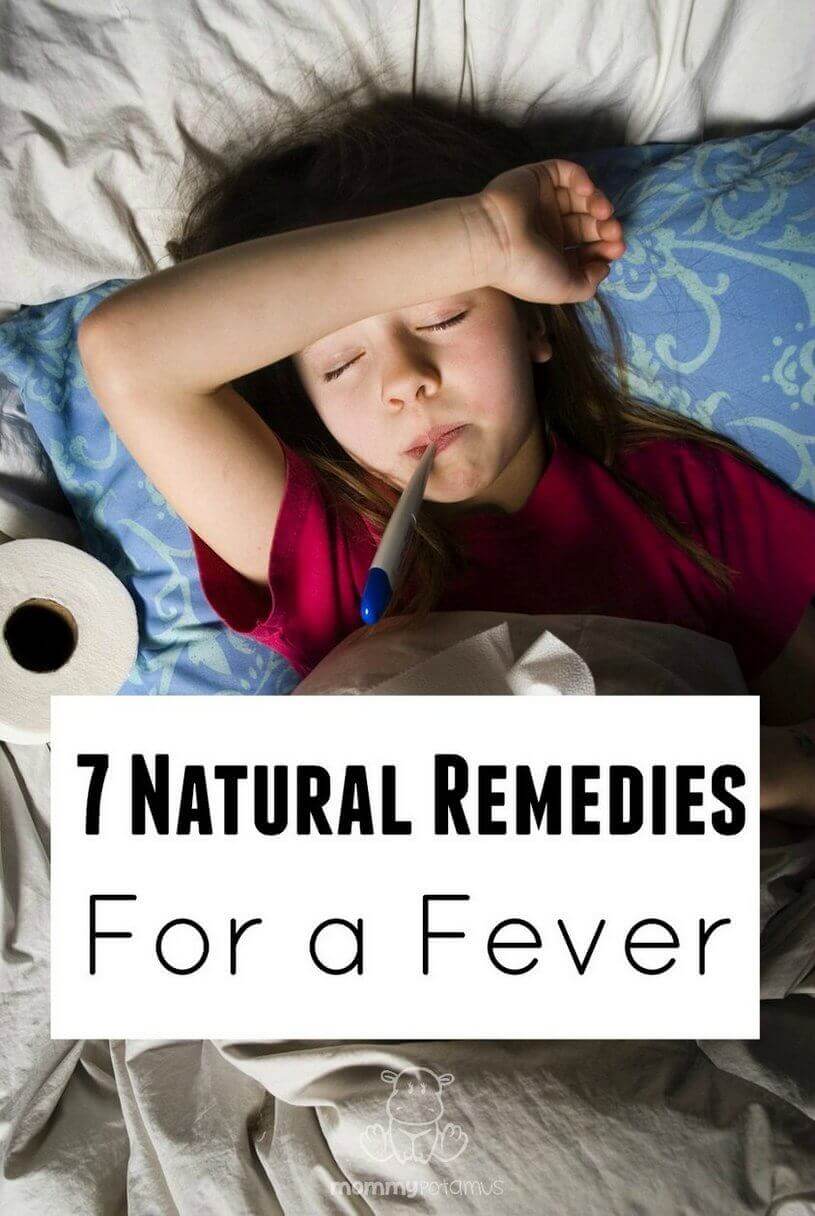
Want more research-backed natural remedies?
No problem, I’ve created a free ebook for you – Kitchen Apothecary: 25+ Natural Remedies Using Ingredients From Your Pantry – as a gift for signing up for my newsletter. You’ll also get updates when I post about safe essential oils for pregnant/breastfeeding mamas, exclusive gifts and coupons (I was able to give away a jar of free coconut oil to anyone who wanted it recently!), plus other goodies.
Sign up using the form below.

